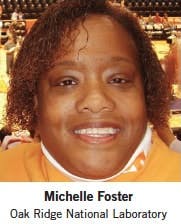Women tech leaders: New perspectives, more-robust solutions
A new generation of female innovators, trendsetters, and executives is having an indelible impact on the industrial space. In their leadership roles, they are adding much-needed diversity and a crucial point of view to several historically male-dominated science, technology, engineering, and math (STEM) professions. Plant Services invited several notable women in STEM fields to share their perspectives on compelling technology trends and the importance of women’s representation in manufacturing and industrial production.
Embracing innovation
People who thrive in industrial fields welcome continuous learning and dynamic change. Though too often still regarded as a stodgy and/or grimy career path, industrial manufacturing and production now boasts robust use of cutting-edge software, technology, business processes, and industry standards.
“Asset-intensive industries are seeking to get better at strategic asset management – understanding within the context of market conditions and regulations the best strategy for designing, installing, operating, and maintaining assets,” says Jill Feblowitz, vice president of utilities and oil & gas at IDC Energy Insights.
“There are a whole host of technologies now available on the market to support these efforts, including instrumentation and communications networks, predictive analytics, simulation, optimization, and mobility,” explains Feblowitz. “We also expect to see accelerators having an impact in the near future, such as 3D printing of spare parts; cognitive computing for root-cause analysis and maintenance approach; and natural interfaces, whether embedded in the equipment, in wearable computers, or in the training environment. The challenge for operations and maintenance, together with IT, is to assemble and integrate these technologies in the most cost-effective ways.”
Mary Bunzel, portfolio manager for IoT, EAM and Business Analytics at IBM, sees the evolution of intelligent sensors as a game-changer within the industrial space. "These sensors are like the nervous system in our body, telling us how our arms and legs are functioning. If you are not paying attention to how your ‘body’ feels, it will be hard for you to win the race against those who do,” says Bunzel. “The next inflection point will be when manufacturers utilize a ‘systems-based brain’ to replace the limited human capacity we have to sense and respond to terabytes of ‘feelings.’ That's the next evolution, and we are on the cusp of it now.”
Specific enablers are driving strategic gains. “The technology trend at my site has been increased use of laser alignment equipment, especially the specialized tools of the laser alignment machine,” says Michelle Foster, maintenance reliability engineer at Oak Ridge National Laboratory (ORNL), research reactors division. “These tools enabled us to better understand how these machines were behaving while running and helped us improve the reliability of these machines with a tweaking of our alignment methods.”
New and improving industry standards compel best practices. “The foundational principles from the ISO 55000 Asset Management Standards – leadership, value, alignment and assurance – make asset management everyone’s responsibility, just like safety and quality, and bring about value through overall equipment effectiveness (OEE), long-term reliability and reduced life-cycle cost (LCC),” says Marie Getsug, senior consultant for maintenance and reliability services at Commissioning Agents and founder of SMRP’s pharma and biotech special interest group.
“Finding ways to introduce evidence-based maintenance to break out of the traditional frequency based and intrusive-type maintenance strategy, and leverage the predictive technologies, automation and instrumentation trends as well as human senses, has been a trend and necessity to improve OEE and LCC,” adds Getsug.
{pb}
Inspiring participation
Female tech leaders are eager to sing the praises of a career in STEM. “Over the last 37 years, I’ve watched the increasing engagement and impact that women have made within the technology arenas,” says Deborah McNeil, project productivity program manager at Dow Chemical Co. and a chair at Fiatech. “We bring new ideas, an inherent willingness to collaborate for success, and a willingness to be vulnerable – to admit we don’t know everything, to ask questions, and to build upon others’ ideas. This frequently results in a better, more-robust solution.”
“The growth in innovative thinking around leadership style is fundamentally changing the manufacturing sector for both current and future employees,” remarks Allison Grealis, president of Women in Manufacturing and a vice president at Precision Metalforming Association. “A new emphasis on collaborative leadership is refining strategies for developing workers at all levels within the company, making everyone feel like an integral part of the team. Research shows that leadership opportunities and meaningful work are important for young people and especially young women, whose talents are a vital resource for the future of the U.S. manufacturing sector."
“Women should consider careers in plant operations and maintenance, as these are excellent jobs in high demand,” adds Donna Milgram, executive director of the Institute for Women in Trades, Technology & Science (IWITTS), an organization that helps educators and employers draw women into historically male-dominated fields. “Plant services is an important career pathway that has become high-tech as the smart buildings of the future are here today.”
It’s a challenging, worthwhile path, today’s female leaders of industry say. “My advice to young women who are considering STEM careers is follow your dreams,” says ORNL’s Foster. “Do not allow the negative people, the self-proclaimed critics, or people with destructive attitudes to discourage you. Listen to the positive voices in your life.”








